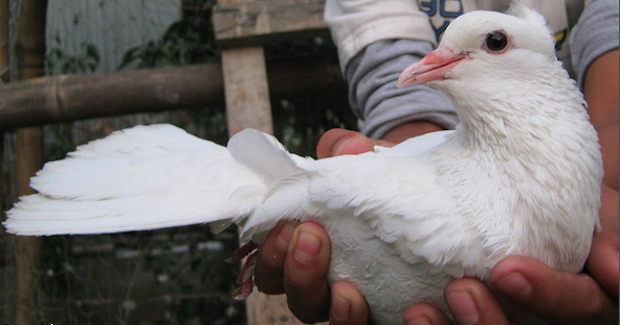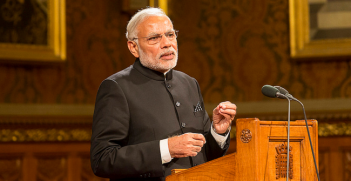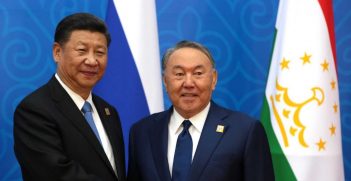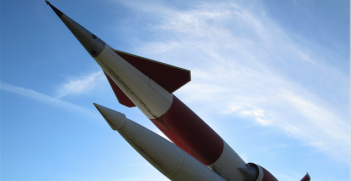Peace Day: An Opportunity for Reflection

The International Day of Peace was inaugurated by the United Nations in 1981 and is celebrated on 21 September across the globe. It provides an opportunity to reflect on the meaning of peace and to think about the role of the UN in creating a more peaceful world. The General Assembly has declared this as a day for strengthening the ideals of peace both within and between peoples and nations. It has been taken up by many as an opportunity to focus on how we are all placed to support peace efforts and raise the profile of peace.
Important discussions are taking place about what type of experience and qualities of leadership the next secretary-general of the UN should have and what impact these qualities will have on the direction the UN takes. It seems certain that leadership in improving how the UN evolves its peacemaking, peacekeeping and peacebuilding activities will be of the highest importance. The world has recently seen a reverse in the declining trend of conflicts since the end of the Cold War, with the devastating conflict in Syria and the highest levels of forced displacement of people ever recorded.
Last year, three reports on peace and security were published, setting in place the foundations of how the UN may develop its work for peace. These were the review of the UN peace operations; the review of the UN Peacebuilding Architecture; and the review of the implementation of Security Council Resolution 1325 on women, peace and security.
But it is not just the UN working for peace, wherever there are conflicts and injustice there are people working for peace or supporting peaceful change. Through the years, many diverse activities have been organised in observance of the Peace Day. These include educational events and conferences, workshops, marches, musical celebrations, meditations, intercultural dialogues and interfaith gatherings, environmental projects, art exhibits, community gatherings and much more. However, one way to observe Peace Day might be to simply reflect on our own meanings of peace.
The meaning of peace
The concept of peace is often seen as simply the absence of war or conflict—in terms of what it is not, rather than what it actually is. Johan Galtung, who is recognised as the founding pioneer of peace studies, put forward the idea that whilst negative peace, or the absence of war and violence, is a necessary condition for peace, positive peace is the presence of systems and relations that maintain a just and equitable society. He distinguished between direct and structural violence. Direct violence is manifested as physical acts such as punching and shooting, and is obvious to an observer. Structural violence is built into the institutions of society, as exemplified by apartheid, and although it is not as visible as direct violence it is just as deadly.
Peacemaking is the art of coming to agreement, such as negotiating ceasefires or treaties, to end hostilities. Peacekeeping seeks to provide support, often through force presence, to maintain those agreements. Peacemaking and keeping serve to limit violence though managing and controlling a potentially dangerous situation. Peacebuilding goes beyond peacemaking or keeping and can occur before and during as well as after a war. Peacebuilding is about creating societies that are fair, cohesive and responsive to peoples’ needs. It is about addressing the structural factors that can cause conflicts, bridging differences and creating connections within and between people and nations that can sustain peace.
Taken together, support for the peace processes continues to evolve as governments, international organisations and civil society efforts seek to contribute to building sustainable peace. Sustainable peace will be a longer term process.
The sustainable development goals
On 25 September 2015, countries adopted a set of 17 goals to end poverty, protect the planet, and ensure prosperity for all as part of a new sustainable development agenda. Each goal has specific targets to be achieved over the next 15 years.
The theme of this year’s Peace Day focuses on the sustainable development goals, which includes Goal 16 “strengthening institutions, peace and prosperity”.
“Sustainable development contributes decisively to dissipation and elimination of these causes of conflict and provides the foundation for a lasting peace. Peace, meanwhile, reinforces the conditions for sustainable development and liberates the resources needed for societies to develop and prosper. Every single one of the 17 Sustainable Development Goals is a building block in the global architecture of peace. It is critical that we mobilise means of implementation, including financial resources, technology development and transfer, and capacity-building, as well as the role of partnerships. Everyone has a stake and everyone has a contribution to make.”
The idea of peace as something that is tangible and can be constructed is reinforced by the analogy of building blocks. Cementing a link between the development goals and peacebuilding fits well with peace theory, which stresses the importance of eliminating structural as well as direct violence. Another positive feature of the theme for the day is the focus on sustainability. The inclusion of peace in Goal 16 of the SDGs recognises the long-reaching consequences of conflict and violence for development outcomes. Violence impedes and hinders development through direct destruction as well as through systems and practices that create injustice, poor management of resources, unequal social and economic conditions, and can undo years of development gains. We need to focus on supporting longer-term processes of peacebuilding, transforming the conditions that give rise to conflicts, and lay sound foundations for human and economic development.
Good intentions, peaceful actions
Having acknowledged the value of Peace Day and the wisdom of the theme for 2016, we note that peace is not just a set of goals, it is also the means by which the goals are reached. The way in which connections are made as programs are implemented, the quality of the relationships between individuals, peoples and nations that develop as they collaborate to meet joint goals are just as important as the goals themselves.
In selecting the new secretary-general there is a danger that geopolitical considerations will overshadow the need to select the best person to lead the UN in its core purpose to pursue peace. The challenge for the new secretary-general will be to integrate the diverse array of goals and maintain the cohesion of the UN while working with a wide range of people and organisations, as well as states, in implementing these goals. The opportunity is for us all is to strengthen support to individuals, institutions and organisations who are working to prevent and transform conflicts and build sustainable peace.
Professor Diane Bretherton is adjunct professor at the School of Political Science and International Studies at the University of Queensland. Professor Bretherton has published many works and is a member of the Editorial Advisory Board of the Journal of Peace and Conflict.
Dr Tania Miletic is a research fellow with the School of Social and Political Sciences at the University of Melbourne and part of the Australian International Conflict Resolution Project. Dr Miletic has more than a decade’s experience in research and teaching, specialising in peace and conflict studies as well as extensive applied experience with peacebuilding programs in the Asia Pacific region.
This article is published under a Creative Commons Licence and may be republished with attribution.





